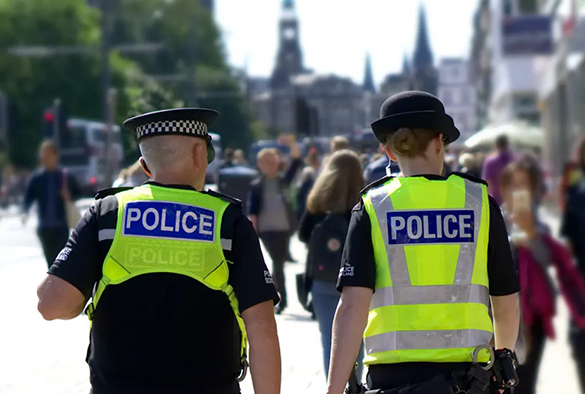What is institutional misogyny in policing and why does it matter?
Published on

This article, written by Catherine Durose, Professor of Public Policy and Co-Director of our Heseltine Institute, and Vivien Lowndes, Professor emerita, Institute of Local Government Studies, University of Birmingham was originally published in The Conversation:
Britain has witnessed a torrent of appalling examples of misogyny by those serving on the front line of public services in recent years. This has included police officers committing acts of violence and abuse against women.
Both the London Fire Brigade and London’s Metropolitan Police have been subject to damning independent reviews designating them as “institutionally misogynist”.
Rather than referring to one-off instances, “institutional misogyny” points to ongoing practices that secure and support men’s power over women.
There is a wealth of evidence in these reviews about how women are regularly devalued and demeaned within these institutional cultures. They experience mocking and insults dismissed as “jokes”, colleagues sharing sexist or explicitly sexual stories, and sexual harassment. The Fire Brigade Union’s recent demand to end the “unnecessary and degrading practice” of female firefighters being forced to strip in front of their male colleagues reveals yet another example of misogynistic practices.
The effect of institutional misogyny
The most obvious impact of misogyny is physical violence against women and girls. This was evident in the kidnap, rape and murder of Sarah Everard by serving Met police officer Wayne Couzens, the conviction of former officer David Carrick for dozens of rapes and assaults, and the violations of Bibaa Henry and Nicole Smallman’s bodies by two Met PCs.
Policing authorities have often dismissed these and other incidents as rare behaviour by “bad apples”. But when institutional misogyny is part of the work culture in an organisation such as the police, it influences the behaviour of all employees.
In recent research, we investigated the impact of proposals for police forces to classify misogyny as a hate crime. Speaking to senior police officers and police and crime commissioners, what we found along the way were shocking examples of institutional misogyny.
We found that police officers struggle to identify or empathise with female victims of crime, and to understand the social context in which violent offending against women and girls took place. Police, including some female police officers, were often dismissive of how incidents such as street harassment affected victims, and did not view addressing the issue as being core to their purpose as police.
One female police officer said that if she received a comment in the street about how she looked she would choose to take it as a compliment. Another spoke dismissively about being called out on the job to respond to a “slap on the bum”.
Institutional misogyny can negatively affect the public’s perception of the performance, fairness and trustworthiness of public institutions. Indeed, a non-profit research organisation More in Common found that trust in the police fell from 63% to 53% in the wake of Couzens’ sentencing.
Responding to misogyny
Despite an ongoing national campaign, only seven forces have tried to implement a policy of classifying misogyny as a hate crime. Within some of those forces, the reaction to the rule change has lifted the curtain on institutional values when it comes to violence against women and girls.
One senior police officer with responsibility for hate crime said that many frontline officers simply didn’t recognise that street harassment from men was “not wanted” by women. Instead, they saw it as “just life”.
Even within police forces that chose to classify misogyny as a hate crime, frontline police officers often used their discretion to bypass the measure, derailing its impact.
Misogynistic institutional cultures are often marked by a refusal to admit to a lack of knowledge as well as an emotional detachment about problems affecting women. Our research showed that police officers often struggled with the emotional complexities of misogynistic offending, and so often chose not to identify it as such.
Some forces chose to exclude domestic violence from their recording of misogynistic hate crime. In doing so, they would inadvertently draw a distinction between violence committed by intimate partners and that by strangers. This is a distinction that campaigners against violence towards women and girls have sought to erase, as it creates a hierarchy where intimate partner violence is considered less serious or worthy of attention.
The ‘institutional’ label
Met police commissioner Sir Mark Rowley has refused to accept the force is “institutionally misogynistic”, one of the Casey report’s key demands. He described the term “institutional” as “confusing” and “political”.
The labelling of institutional cultures as misogynistic is an important step forward in recognising how our public institutions can act against the interests of women and girls. It draws our attention to pervasive and normalised ways of working in organisations that are meant to serve the public. Refusing to name it can obscure the effects of misogyny that go beyond the actions or decisions of particular “bad apples”.
The horrific cases of violence against women by Met police officers will stick with the public for years to come, but they do not show the full scope of the problems with British policing and public institutions. Our conversations with members of these institutions themselves show how misogyny is not just a series of events, it is part of the culture.![]()
This article is republished from The Conversation under a Creative Commons license. Read the original article.